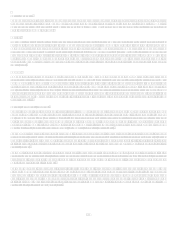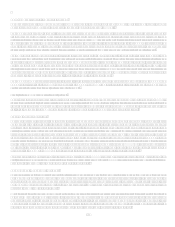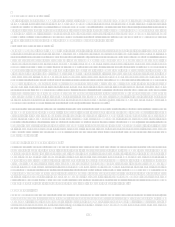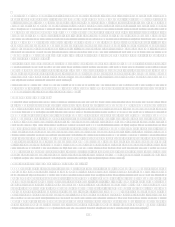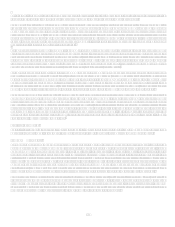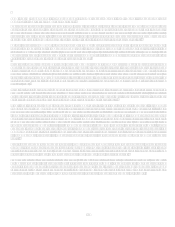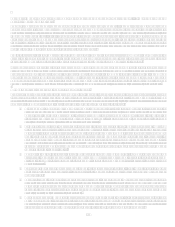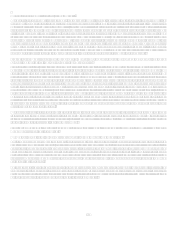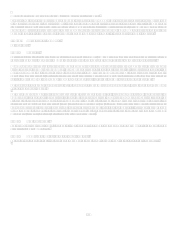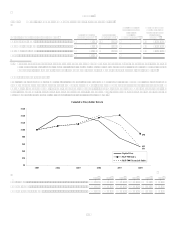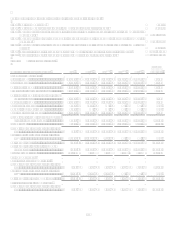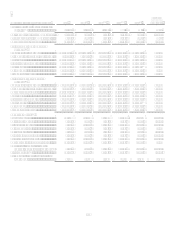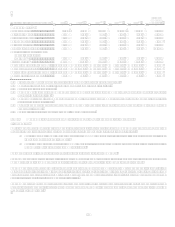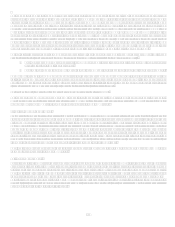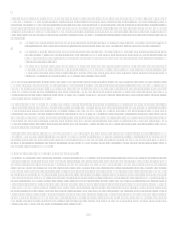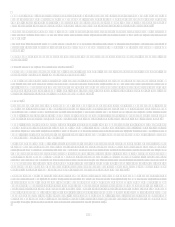Capital One 2008 Annual Report Download - page 40
Download and view the complete annual report
Please find page 40 of the 2008 Capital One annual report below. You can navigate through the pages in the report by either clicking on the pages listed below, or by using the keyword search tool below to find specific information within the annual report. 22
Industry practices. Our charge-off and delinquency rates may be negatively impacted by industry developments, including
new regulations applicable to our industry.
Collateral. Collateral, when we have it, could be insufficient to compensate us for loan losses. When customers default on
their loans and we have collateral, we attempt to seize it. However, the value of the collateral may not be sufficient to
compensate us for the amount of the unpaid loan and we may be unsuccessful in recovering the remaining balance from
our customers. Particularly with respect to our commercial lending and mortgage activities, decreases in real estate values
could adversely affect the value of property used as collateral for our loans and investments. Thus, the recovery of such
property could be insufficient to compensate us for the value of these loans.
New York Concentration. Although our lending is geographically diversified, in general, our commercial loan portfolio is
concentrated in the New York metropolitan area. The regional economic conditions in the New York area affect the
demand for our commercial products and services as well as the ability of our customers to repay their commercial loans
and the value of the collateral securing these loans. A prolonged decline in the general economic conditions in the New
York region could have a material adverse effect on the performance of our commercial loan portfolio and our results of
operations.
The Soundness of Other Financial Institutions Could Adversely Affect Us
Our ability to engage in routine funding transactions could be adversely affected by the stability and actions of other financial services
institutions. Financial services institutions are interrelated as a result of trading, clearing, counterparty and other relationships. We
have exposure to many different industries and counterparties, and we routinely execute transactions with counterparties in the
financial services industry, including brokers and dealers, commercial banks, investment banks, mutual and hedge funds, and other
institutional clients, resulting in a significant credit concentration with respect to the financial services industry overall. As a result,
defaults by, or even rumors or questions about, one or more financial services institutions, or the financial services industry generally,
have led to market-wide liquidity problems and could lead to losses or defaults by us or by other institutions.
Likewise, adverse developments affecting the overall strength and soundness of our competitors or the financial services industry as a
whole could have a negative impact on perceptions about the strength and soundness of our business even if we are not subject to the
same adverse developments. In addition, adverse developments with respect to third parties with whom we have important
relationships also could negatively impact perceptions about us. These negative perceptions about us could cause our business to
suffer and exacerbate the other risks that we face.
Reputational Risk And Social Factors May Impact Our Results
Our ability to originate and maintain accounts is highly dependent upon the perceptions of consumer and commercial borrowers and
deposit holders and other external perceptions of our business practices and/or our financial health. Adverse perceptions regarding our
reputation in the consumer, commercial and funding markets could lead to difficulties in generating and maintaining accounts as well
as in financing them. Particularly, negative perceptions regarding our reputation could lead to decreases in the levels of deposits that
consumer and commercial customers and potential customers choose to maintain with us.
In addition, a variety of social factors may cause changes in borrowing activity, including credit card use, payment patterns and the
rate of defaults by accountholders and borrowers domestically and internationally. These social factors include changes in consumer
confidence levels, the publics perception regarding consumer debt, including credit card use, and changing attitudes about the stigma
of personal bankruptcy. If consumers develop negative attitudes about incurring debt or if consumption trends continue to decline, our
business and financial results will suffer.
Goodwill Impairment Could Negatively Impact Our Net Income And Stockholders Equity
Goodwill is not amortized, but is tested for impairment at the reporting unit level, which is an operating segment or one level below an
operating segment. Goodwill is required to be tested for impairment annually and between annual tests if events or circumstances
indicate that it is more likely than not that the fair value of a reporting unit is less than its carrying amount. There are numerous risks
that may cause the fair value of a reporting unit to fall below its carrying amount, which could lead to the measurement and
recognition of goodwill impairment. These risks include, but are not limited to, adverse changes in legal factors or the business
climate, an adverse action or assessment by a regulator, the loss of key personnel, a more-likely-than-not expectation that all or a
significant portion of a reporting unit may be disposed of, failure to realize anticipated synergies from acquisitions, a sustained decline
in the Companys market capitalization, significant negative variances between actual and expected financial results, and lowered
expectations of future financial results. The Company recorded $810.9 million of goodwill impairment in 2008, and as of
December 31, 2008, had approximately $12.0 billion of goodwill remaining on its balance sheet. Declines in the Companys market
capitalization increase the risk of further goodwill impairment in 2009.



